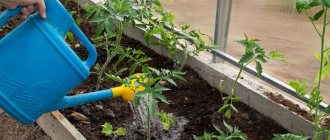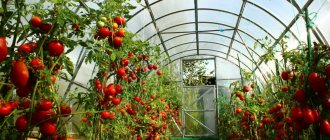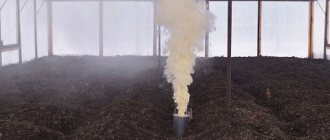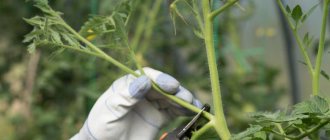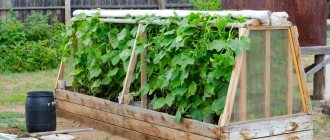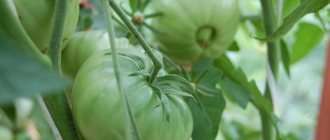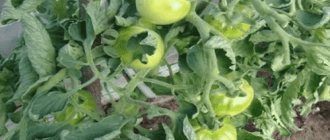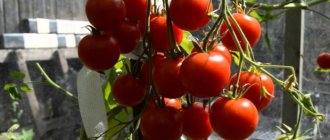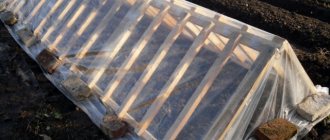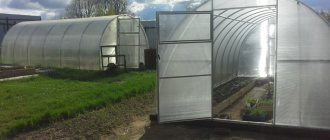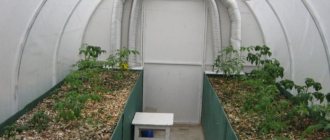Everyone has heard about the dangers of nitrates - these substances are dangerous to human health. Gardeners are trying in every possible way to avoid using fertilizers that contain harmful compounds in their garden beds. Therefore, mineral fertilizers, unlike organic fertilizers, are not particularly popular among gardeners. How to feed tomatoes so as not to harm the plant and fruits?
Urea, or urea, is a mineral fertilizer that stimulates the growth of tomatoes. How safe it is to use this fertilizer, how to dilute the solution for root, foliar feeding and spraying - you will learn all this from our article.
What is urea
Urea, popularly called urea, is a mineral fertilizer produced in the form of white granules. The substance contains nitrogen, which is considered the main element for healthy plant growth. Of all existing fertilizers, urea contains the highest concentration of nitrogen.
Fertilizing tomatoes with urea is often used for industrial purposes; in addition, the fertilizer has also found use in small greenhouses and greenhouses. Urea is popular because it allows you to control the concentration of nitrates through proper dosing. The compounds included in its composition partially evaporate, which prevents the accumulation of hazardous substances in the fruits.
Peculiarity . Urea can be used in combination with superphosphate and potassium fertilizers.
The role of urea in the development of tomatoes
Urea is used as a fertilizer when growing tomatoes. It is especially important for the full development of seedlings, as it can enhance the growth and productivity of the plant. Fertilizer is involved in the growing season of tomatoes, making the seedlings strong and hardy. Its active components are necessary during the period of plant growth of green mass and development of the root system. However, it is important not to exceed the recommended dose, otherwise it will harm the tomatoes.
The fertilizer consists of 50% nitrogen - a substance that helps the plant become more resistant to diseases and pests. With a lack of this substance, tomatoes are deformed, and the leaves turn yellow and fall off, which negatively affects the formation of the ovary and fruits.
Benefits of urea:
- complete dissolution in water;
- evaporation of harmful substances;
- does not contribute to the accumulation of nitrates in soil and fruits;
- accelerates the growth of vegetative mass;
- Serves as a preventive measure against diseases and insects.
Disadvantages of urea:
- using a cold solution can cause plant stress;
- Exceeding the dosage leads to seedling burns.
How does urea work?
As soon as urea enters the soil, its active compounds begin to interact with local microorganisms. During the reactions, ammonium is produced from carbon dioxide, which, when released into the open air, is converted into ammonia.
Due to the ability of urea to transform, it should be applied as deeply and in large quantities as possible. The effect of its use is reduced to zero if a little fertilizer was used or it was intended for external feeding.
Peculiarity . Urea is not very effective in alkaline or neutral soil.
Mineral fertilizers are best suited for foliar feeding, as they do not burn the stem and leaves, which cannot be said about saltpeter, which gardeners often use.
It is believed that urea is not suitable for use in greenhouses, however, if used correctly, the fertilizer can be used in closed beds. This is especially true for soil with excess moisture: urea is more appropriate than saltpeter, since nitrogen is less washed out by rain and groundwater.
Information about culture
The tomato, or tomato, belongs to the Solanaceae family. The vegetable has a good root system, which can go very deep, to a distance of about 1 m. The tomato has a wide choice of propagation methods. Its roots can form in any part of the stem, so the option of pinching and cuttings is possible. Depending on the variety, the height of tomato stems varies from 30 cm to 2.5 m. This is a self-pollinating crop that contains both male and female flowers when flowering.
Fruits of a tomato bush
The fruits of the tomato bush are berries that are distinguished by their juiciness, different taste qualities, round shape and variety of colors. Also, depending on the variety of planted variety, the fruits differ in weight.
According to external characteristics, the crop has three varieties: potato, standard and non-standard.
In order to grow a high-quality and rich harvest, the first step is to decide on the tomato variety. When choosing, you should rely on factors such as: growing location (open ground, greenhouse or balcony option), soil quality, proximity to groundwater, climate, etc.
It is recommended to purchase seeds from a specialized place. Before planting, they can be left for some time in a solution of potassium permanganate; this will rid the planting material of fungal, viral and bacterial infections.
The soil for planting tomatoes must be prepared in the fall. During the autumn digging of the site, you can add organic fertilizers to the soil in the form of garden compost, ash and eggshells. There cannot be an excess of fertilizing the soil in this way, so you don’t have to carefully monitor the amount of fertilizer applied.
Important! When planting tomatoes in seedlings, it is recommended to warm the soil. This will allow the root system to quickly adapt to new conditions. The sprouts can be buried down to the first leaves; if the seedlings are too elongated, then even down to the second or third.
Growing tomatoes has some peculiarities. For example, in order for more new ovaries to form on a bush, it must be formed correctly. In addition to pinching the tops, in order for the bushes to be divided into two shoots, it is recommended to tear off the lower leaves of the bushes before the first color. With this technique, the sprouts do not waste energy on the formation and vital activity of foliage, but direct all their energy to the development of fruits, because to ensure normal vital activity, a tomato needs only 3 pairs of leaves. By the way, in addition to increasing the ovary, this will reduce the risk of fungal infections and provide better air circulation in the bed with seedlings.
When planting tomatoes in seedlings, it is recommended to warm the soil
Along with all the advantages of an agricultural crop such as a tomato, there are also disadvantages, the biggest of which are tomato diseases. Most varieties are extremely susceptible to diseases, the most terrible of which are: spotting, late blight, rot, mosaic, etc. In order to protect the planting, you should follow some rules:
- Select seedling varieties adapted to the climate at the planting site;
- Timely destruction of diseased bushes before they have time to infect the entire garden bed;
- Weeding;
- Proper watering;
- Regular feeding.
The tomato does not require frequent watering, but when moistening the soil, it is necessary to ensure that the water reaches the deepest parts of the soil. Shallow, frequent watering can cause root rot. Over-wetting the soil will cause the fruits to be watery and tasteless. In order to avoid the appearance of fungal diseases, it is necessary to water in such a way that as little moisture as possible falls on the above-ground part of the plant.
Note! One of the most important factors influencing the abundance and quality of the tomato harvest is timely and regular feeding. In addition to the fact that this agricultural crop accepts organic matter well, it will also respond with great gratitude to mineral fertilizers.
When to use urea for tomatoes
Tomatoes need to be fertilized at all stages of development, but at the seedling stage, urea is especially necessary.
Urea should not be added to the soil immediately before planting: if you put it in the holes, the plant may die. It is also not recommended to use it too often.
Foliar feeding is carried out in early June. The use of urea is prohibited during the period of flowering and ovary formation. Large amounts of nitrogen in the soil can delay fruit development.
Important ! Do not water the beds immediately after using the fertilizer.
You can moisten the soil a few hours after adding urea. The plant must have time to absorb the beneficial components before they are washed off with water.
Common problems when growing seedlings
The appearance and shape of the bush suggests that there are problems with nutrition or maintenance. If the temperature, humidity and light are normal, but the color of the leaves changes, the seedlings grow poorly or have stopped growing altogether, then the plant is experiencing a lack of nutrition.
Thin stem
Pulling of seedlings can be stopped at any stage. This often happens due to excess nitrogen in the soil. Potassium fertilizer is added to the plants; it will stimulate root growth and temporarily inhibit upward growth.
How to prepare urea
When preparing urea-based fertilizer, it is important to observe the following proportions:
- For application to the soil per 1 sq. m use 20 g of fertilizer.
- To prepare a solution for irrigation, you will need to dilute 20 g of urea in 10 liters of water.
- In the spray solution, 30 g of the nitrogen element should be per 10 liters of water. Experienced gardeners prepare the mixture according to this recipe: dissolve 20 g of urea in 5 liters of water. For 1 bush, 1 liter of fertilizer is enough.
- A liquid solution is also prepared based on urea: 50 g of the substance is diluted in 9 liters of water. This amount is calculated to fertilize a garden with an area of 20 square meters. m. This solution is also suitable for spraying and feeding adult plants. The mixture is enough to process 50 bushes.
- Urea is used to feed the roots of the plant: 200 g of fertilizer is mixed with 10 liters of water. The mixture is suitable for treating an area of 100 square meters. m. This concentration is often used by industrialists; ordinary summer residents can reduce the amount of fertilizer by 2 times.
- The most used recipe for urea solution is: 1 tbsp. l. fertilizers are diluted in a bucket of water. The mixture is suitable for spraying the green mass of plants and foliar feeding. To prepare the solution you need to use warm water.
Important ! An increase in the concentration of urea in the solution can cause plant burns.
Breeding rules
We have already talked about the role of urea for feeding tomatoes. It remains to be seen how to properly breed it in order to achieve a positive effect of nitrogen on the development of plantings.
To dilute urea, you must first carefully study the recommendations.
Warning! Excessive amounts of urea can harm your plants.
Sometimes it can be difficult to determine the amount of fertilizer if you don't have a measuring spoon. We offer you a table that will help you accurately measure the most common fertilizers.
Advice! Before planting tomatoes, you can add dry urea (no more than 3 grams) to each hole and mix with the soil.
According to the recommendations, 25 grams of granulated urea per square of planting is sufficient for one square. They are bred in a 10-liter bucket. This solution is enough for 10 tomatoes. Water at the root.
Important! Urea can cause the soil to become acidic. To avoid this problem, it is necessary to deoxidize it with limestone.
How to use fertilizer
Urea is used to fertilize the soil and root system. It is also suitable for spraying tomato leaves.
Planting seeds in a substrate with urea
For the full development of seedlings, urea is added to the substrate before planting the seeds. Some people make holes, pour fertilizer into them, and then plant the seed. Experienced vegetable growers do not recommend this method - it is better to mix urea with all the soil in the planting box.
Before using urea, you need to moisten the soil. If it is not possible to water the entire garden, sprinkle the fertilizer with a small amount of soil. For 1 sq. m, 10-15 g of fertilizer is enough.
Watering tomatoes with urea
When watering tomatoes with urea solution, do not allow the liquid to get on the leaves. The solution is applied strictly at the root. It is better to do this in the evening to eliminate the risk of burning the plant.
Foliar sprays
For foliar treatments, prepare a solution with a weaker concentration of urea. A large tablespoon of fertilizer per 10 liters of water is enough.
Spraying with urea has a good effect on the growth of green mass - the leaves become fuller and greener.
Important rules for feeding tomatoes with urea
Urea is a chemical, so when working with it you need to follow some rules:
- Dilute the solution according to the manufacturer's instructions.
- Water the plants only in the evening.
- Carefully monitor the reaction of tomatoes to fertilizing.
- At the first sign of burns or soil saturation with nitrogen, stop using.
Watering
Tomatoes are a crop that requires moderation in everything, including watering. There is no need to overdry or flood the seedlings; it is enough to always keep the soil slightly moist. Before the emergence of tomato seeds, the top layer of soil is irrigated with a spray bottle; after the appearance of 2–3 leaves on the seedlings, in order to stimulate the development of the root system, watering from below (into a tray) is practiced. The water must be settled or filtered, at least +20 C.
Growing tomato seedlings is a troublesome task, but at the same time rewarding: eating juicy and tasty tomatoes from your garden, anyone will be glad that these fruits are entirely his own doing. And such a variety of fertilizers for tomatoes and methods of using them is guaranteed to provide both a novice summer resident and an experienced agronomist with a rich harvest.
Nuances of feeding tomatoes
Urea can be used in both open and closed beds.
In the greenhouse
When using urea in a greenhouse, it is important to consider the location of the beds. If tomatoes are planted in a permanent place, fertilizer is applied in small quantities, otherwise the plants will experience an excess of nitrogen. An imbalance in the soil will negatively affect the number of ovaries - the tomatoes will intensively form foliage and stepsons.
In the open ground
When fertilizing tomatoes in open beds, various factors are taken into account: the characteristics of the soil, the variety of tomatoes, their growth and the formation of ovaries. Urea is usually used during the development of seedlings. Additionally, it is added only if the condition of the plants has deteriorated.
Many gardeners, in order not to get confused when it is necessary to fertilize, draw up a schedule. However, it is important to consider that at different stages of development the plant will need different microelements. Urea is not an all-purpose fertilizer, so it is not recommended for continuous use. It is better to combine urea with organic and phosphate fertilizers.
What you need to know
It is important to take into account that the concentration of nitrogen directly affects the degree of oxidizing effect of the fertilizer on the soil. Therefore, the feeding process must be combined with the soil deoxidation procedure. To reduce acidity, you can use limestone (in a ratio of 8:10 along with fertilizer).
The addition of urea can in some cases cause stress in plants. To prevent this from happening, you need to:
Using urea too often will have a negative impact on the fruit. The plant will actively grow green mass, neglecting its fruit-bearing function. As a result, the bush will produce small and low-quality tomatoes. Therefore, feeding tomato seedlings and adult bushes with urea is done only when necessary. And then they will delight their owners with a bountiful and tasty harvest.
Source
Tomato feeding scheme
Fertilizer application is practiced in areas with poor soil. In one season, urea can be used 5 times:
- During the period of growing seedlings. Add 1 g of fertilizer to the planting box, and then sow the seeds.
- When planting seedlings in the garden. Fertilizing is applied a week after planting.
- 3 weeks after planting the seedlings. Premature use of fertilizer will lead to vigorous growth of green mass. At this stage, you can use a solution of mullein and urea.
- Fertilizing is carried out only if the inflorescences begin to fall off. Urea can be diluted with other microfertilizers for tomatoes.
- The last time urea is used is during the fruiting period. It is best to combine urea with other fertilizers - dilute 2 g of urea, potassium sulfate and potassium magnesium in 10 liters of water. After watering, the beds can be sprinkled with wood ash.
Tips and tricks
The nitrogen contained in urea can spoil the soil. To reduce the likelihood of soil depletion, use lime - it neutralizes the effect of nitrogen. For 2 kg of fertilizer you will need 1 kg of lime.
Lime is used three times throughout the season. The first time it is introduced during preparation for planting seedlings, then mixed with urea and applied during the period of active growth.
Another way to protect the soil from acidification is to add bird droppings, wood ash and superphosphate to the urea.
To protect tender shoots from the aggressive components of urea, copper sulfate is added to the spraying solution.
Many gardeners use urea as fertilizer after picking. Like no other product, it promotes the rapid growth of tomato green mass. 1 tbsp. l. urea is dissolved in 10 liters of water and the plant is watered abundantly.
Reviews from vegetable growers
Almost all gardeners who have used urea speak positively about it. This product is highly recommended by people of the older generation, who began fertilizing their beds with it back in Soviet times. Over time, urea has not lost its relevance; practice has shown that the fertilizer packages currently produced are more convenient to use.
Svetlana, 52 years old: “Urea is an accessible, inexpensive fertilizer that helps grow strong seedlings. I noticed that after using it, tomatoes are more resistant to diseases.”
Victor, 72 years old: “I’ve been using Carbamide in the garden for a long time. The product can be used to fertilize the soil, root system and spray. I use it not only for tomatoes, but also for processing garden plants.”
Alexandra, 60 years old: “I feed tomatoes with urea during the period of seedling growth. When breeding it, it is important to follow the dosage, otherwise the plants may die.”
